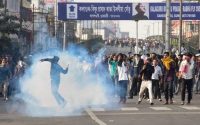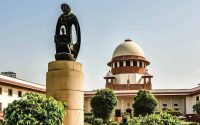$100 Website Offer
Get your personal website + domain for just $100.
Limited Time Offer!
Claim Your Website NowSupreme Court rules flouted in demand for damages.
Source – thehindu.com
The Supreme Court had suo motu laid down 10-point guidelines for assessment of damages and liability in its judgment in Re: Destruction of Public and Private Properties Vs State of A.P and others on April 16, 2009.
The assessment of “exemplary damages” for property destroyed in incidents of violence should be based on electronic media/private video evidence. The prosecution has to separately prove that the damage occurred during protests and was the result of “direct actions” of the persons concerned.
The claims are to be processed under the aegis of the Supreme Court or the State High Court concerned.
The constitutional court involved would ultimately decide the liability for the damages caused. The State government cannot unilaterally decide exemplary damages. It has to be decided after judicial application of mind.
For one, wherever a mass destruction to property takes place due to protests or thereof, the High Court may issue suo motu action and set up a machinery to investigate the damage caused and award compensation.
When multiple States have suffered damages, the Supreme Court should take over cognisance.
In each case, the High Court or Supreme Court, as the case may be, should appoint a sitting or retired High Court judge or a sitting or retired district judge as a Claims Commissioner to estimate the damages and investigate liability. An assessor is appointed to assist the Claims Commissioner.
The Claims Commissioner and the assessor, acting on the instructions of the High Court or Supreme Court, may summon video or other recordings from private and public sources to pinpoint the damage and establish nexus with the perpetrators of the damage.
The principles of absolute liability shall apply once the nexus with the event that precipitated the damage is established. The liability will be borne by the actual perpetrators of the crime as well as organisers. Their shares would be decided by the court.
Exemplary damages should not be greater than twice the amount of the damages liable to be paid. Damages should be assessed for destruction to public or private property, injury or death and cost of the actions by the authorities and police to take prevent and contain the violence.
The Claims Commissioner would finally make a report to the High Court or Supreme Court, which would determine the liability after hearing the parties.



